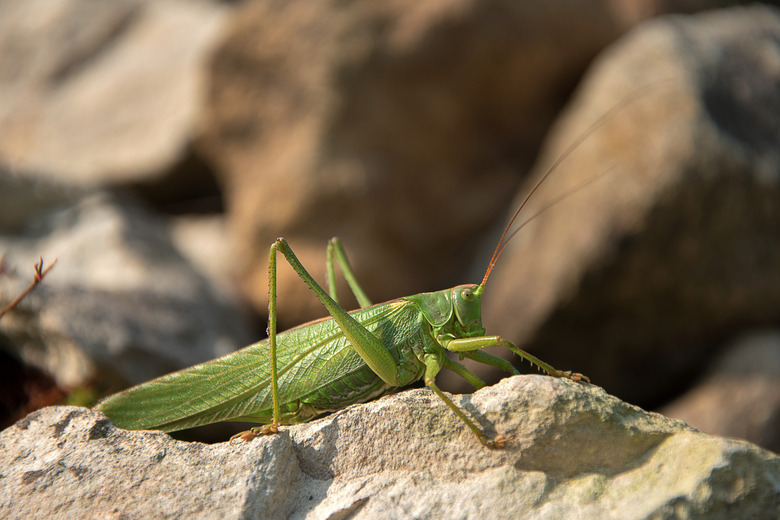What Attracts Grasshoppers?
Grasshoppers are insects that find their way into your yard, garden, outside furniture and toys, even your home. They are characterized by two huge hind legs that help them jump long distances and two sets of wings. These herbivores feed on plants and grass and can be found just about anywhere in the United States. Ridding your yard of them is challenging, but removing the very things that attract these creatures can help.
Grass
Grass
Grasshoppers are drawn to patches of grass for several key reasons, chiefly because it is a main source of nutrition for them. Grasshoppers feed on grass, among other things. They also lay their eggs in the soil under the grass, which is why your green carpet of lawn is an ideal spot for these winged insects.
Crops
Crops
Agricultural crops attract grasshoppers. They particularly target lettuce, beans and onions, according to the University of Colorado Extension. If a large number of grasshoppers is drawn to a particular crop, it can have devastating effects for a farmer.
Gardens
Gardens
In addition to plain grass and fruit and vegetable crops, grasshoppers also feed on plants, which is why they are so attracted to gardens. They not only use their droppings to fertilize the soil, they also eat the plants, which can have a negative impact on a growing garden. The species most likely to do this are the twostriped grasshopper and the redlegged grasshopper. Some species will leave garden plants alone and feed mostly on weeds.
Grasshopper Control
Grasshopper Control
There are several ways to try to control the spread of grasshoppers. You might just wait it out: Cold, dry weather is dangerous for newly hatched grasshoppers. You could also use baits or chemical sprays; however, keep in mind the impact this may have on your garden plants or grass. There are sprays available that are safe for plants as well as more hardcore insecticides that can only be used on certain plants and crops.
Cite This Article
MLA
Belcher, Lynda Moultry. "What Attracts Grasshoppers?" sciencing.com, https://www.sciencing.com/attracts-grasshoppers-8554003/. 22 November 2019.
APA
Belcher, Lynda Moultry. (2019, November 22). What Attracts Grasshoppers?. sciencing.com. Retrieved from https://www.sciencing.com/attracts-grasshoppers-8554003/
Chicago
Belcher, Lynda Moultry. What Attracts Grasshoppers? last modified March 24, 2022. https://www.sciencing.com/attracts-grasshoppers-8554003/
